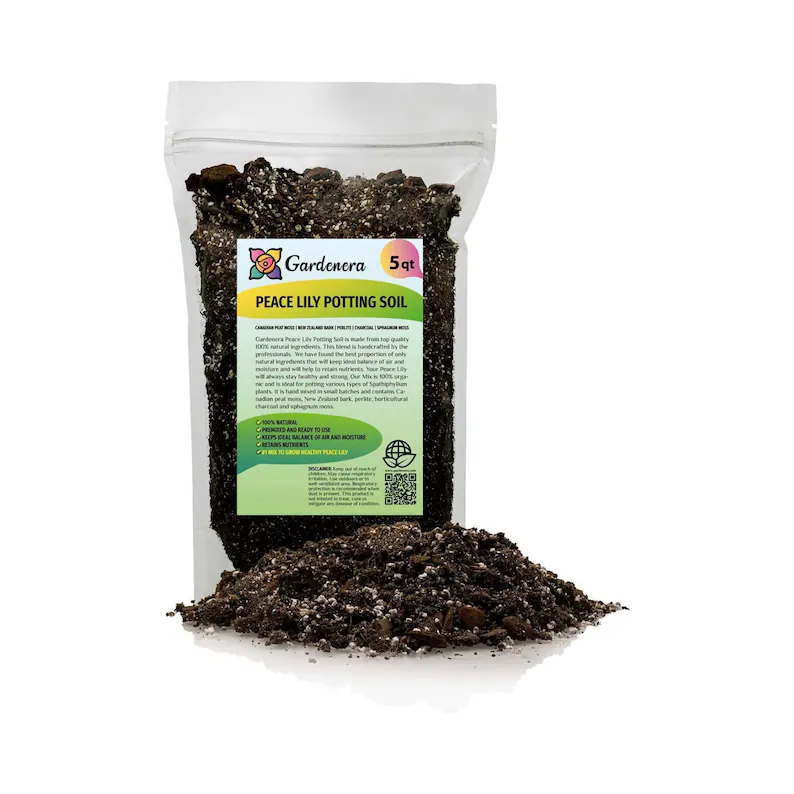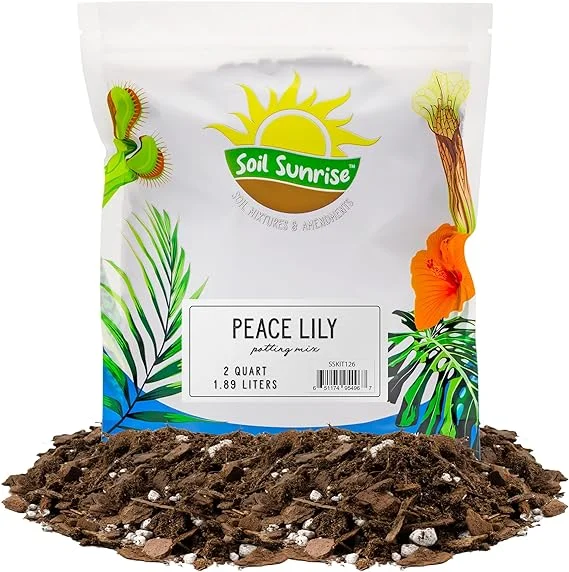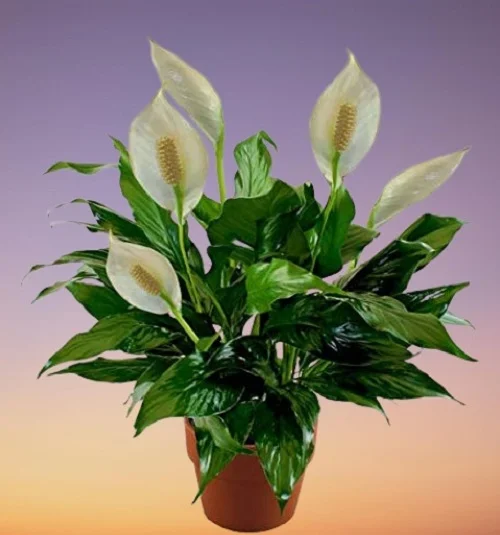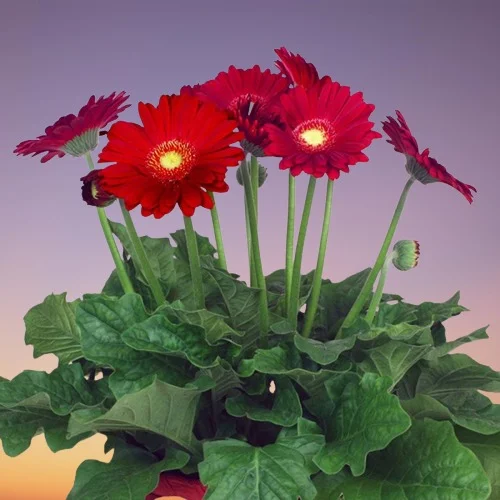12 Reasons Why Peace Lily is Dying and How to Resolve Them
Some links in this post may be affiliate links
Peace Lily is dying due to dry air, insufficient light, pests infestations, root-rot, nutrients deficiency, direct sunshine, inconsistent watering, drafts, salts buildup among others.
Spathiphyllum wallisii thrives in bright indirect light (filtered light), warmth of 18-260C, humidity of 50-55% and moderately moist, fertile, well-drained potting mix coupled with monthly feeding during the growing season. Learn how to grow and care for Peace Lily.
If the right growing conditions are not provided, your Peace Lily will develop some problems like yellow leaves, drooping, stunted growth and may even die. Below are 12 reasons why a Peace Lily may die and how to fix them.
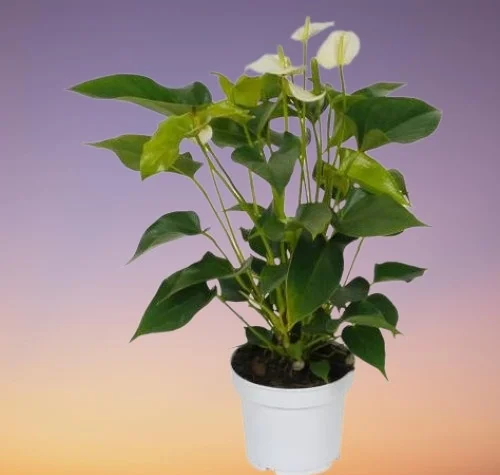
12 Reasons Peace Lily is Dying and How to Fix Them
1. Dry air
Dry air will result in too low humidity which will lead to reduced growth, wilting, yellowing, leaf drop and eventually plant death.
How to fix it
To elevate humidity for your Peace Lily, group the plants together, set the pot on a wet pebble tray or use a cool mist humidifier. You may grow the plant in a well-lit bathroom, kitchen, laundry area and other humid areas in the home.
2. Insufficient light
Adequate light is necessary for photosynthesis, the process of making food needed for energy and growth of the plant.
Though Peace Lily can tolerate low light, too little light means that the plant cannot make enough food for growth and development which results in stunted growth and death of the plant.
How to fix it
Position your Peace Lily in a brighter spot where it will receive bright indirect light or instal a grow light if the natural lighting is not enough.
Regularly rotate the pot to ensure that the plant receives light on all sides for even growth to prevent lopsided growth.
3. Pest infestations
Peace Lily is fairly resistant to pests. However, weak plants can be attacked by aphids, mealybugs, spider mites and fungus gnats which are prevalent in low humidity conditions. These pests cause the plant to become dehydrated, wilted, stunted and to begin to die.
How to fix it
Isolate the affected plant to prevent spread to the other plants and treat it with an insecticidal soap or neem oil. Ensure to follow the manufacturers' recommendations.
Maintain your Peace Lily is healthy at all times by providing it with the right growing conditions.
Increase humidity or grow the plant in a well-lit bathroom to minimize pest infestations.
Keep the plant well pruned by removal of spent flowers, dead and yellow foliage to minimize pest infestations. Cut the leaves with a clean sharp knife or scissors as close to the base as possible.

4. Nutrients deficiency
Overfeeding will cause the roots to die due to fertilizer burn result in plant death due to lack of food. Underfeeding implies that the plant is not getting enough nutrients needed for growth, therefore, the plant begins to die.
How to fix it
Feed your Peace Lily monthly in spring and summer with a phosphorous-rich, water-soluble fertilizer to encourage flowering. Ensure that the fertilizer contains micronutrients.
Do not feed in fall and winter as growth is minimal and feeding at this time can lead to fertilizer burn and death of the plant.
5. Poor quality soil
Poor quality soil does not drain easily and therefore it easily becomes compacted or soggy which can result in reduced growth and death of the plant.
How to fix it
Grow your Peace Lily in loose, well-drained soil which is rich in organic matter to prevent it from getting soggy while providing the required nutrients. These 9 potting mixes designed for Peace Lily are perfect for this plant.
6. Root-rot disease
Root-rot is a fungal dsease which is enhanced by soggy soil. It is characterized by yellowing, wilting and drooping of leaves which is rapidly followed by browning and plant collapse.
How to fix it
Slip your Peace Lily out of its pot and inspect the roots. Brown-black mushy roots indicate root-rot, trim them off.
Treat the healthy roots with a copper-based fungicidal solution as indicated by the manufacturer.
Disinfect the pot with the fungicidal solution or use a fresh pot to repot the plant in fresh, well-drained soil.
Do not water the plant and keep it dry for 5-7 days before resuming watering to allow it enough time to recover.
To prevent root-rot in the future, use a pot with a drainage hole and free-draining soil to prevent it from getting soggy.
Water less in fall and winter as growth is minimal at this time, therefore, the plant does not require much water.
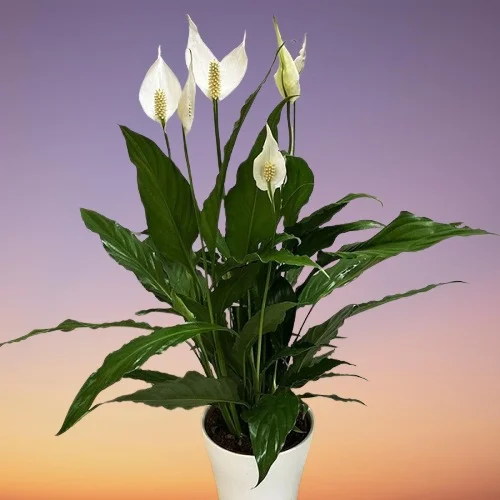
7. Direct sunshine
Exposing your Peace Lily to direct sunlight will result in scorching, wilting and drooping leaves, and eventual death of the plant.
How to fix it
Place your Peace Lily in a more shaded spot or instal a light curtain to protect it from hot direct sunshine to prevent its death.
8. Inconsistent watering
Overwatering will cause the roots to die due to lack of oxygen meaning they cannot take up water and therefore the plant begins to die.
Underwatering implies that there is too little moisture in the soil, therefore, the plant will wilt, yellow and eventually die if the situation is not corrected.
How to fix it
Water your Peace Lily when the top 2-3 inches of soil dry out but do not allow the soil to dry out completely.
Ensure the pot has a drainage hole and the soil is well-draining to prevent it from getting soggy.
9. Too cold water
Constantly watering your Peace Lily with too cold water will cause cold shock in this tropical plant which may result in reduced growth and plant death.
How to fix it
Use water that is at room temperature to water your Peace Lily to prevent cold shock, reduced growth and eventual death of the plant.

10. Drafts
Drafts will cause sudden changes in temperature resulting in stunted growth, yellowing, drooping and eventual death of the plant.
How to fix it
Keep your Peaces Lily away from drafts like AC units, hot air vents, windy doors, drafty windows, heat sources and others to maintain a warmth of 18-260C.
11. Being extremely pot-bound
Though Peace Lily blooms best when slightly pot-bound, when it becomes extremely pot-bound it begins to die. This is because there is very little soil to hold water when watered. This implies that there is no water to take up, meaning the plant cannot make adequate food for growth. Therefore, this causes the leaves to wilt, droop and begin to die.
How to fix it
Check the bottom of the pot, if you notice massive amount of roots growing through the drainage hole, the plant is extremely pot-bound.
Repot your Peace Liliy into a pot one size larger than the current one or divide it into several sections to propagate new plants.
Thereafter, repot the plant at the beginning of the growing season when it becomes extremely pot-bound. Use a pot one size larger than the current one with a drainage hole.
12. Salts buildup
Accumulation of salts or chemicals in the soil will cause fertilizer burn on the roots resulting in stunted growth and plant death. Excess salts may arise from use of hard water or from the fertilizers used to feed the plant.
How to fix it
Water your Peace Lily with chemical-free water, like rain water or filtered water as it is sensitive to chemicals dissolved in water.
Regularly, flush out accumulated salts from the soil by running a stream of water through the soil. Allow the stream of water to run for some time and repeat the process several times.
You liked it? Share on social media.
Related Content
Amazon Associates Disclosure
Homeplantsguide.com is a participant in the Amazon Services LLC Associates Program, an affiliate advertising program designed to provide a means for sites to earn advertising fees by advertising and linking to amazon.com.
